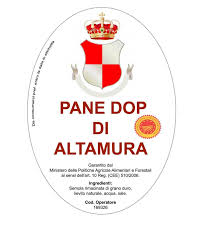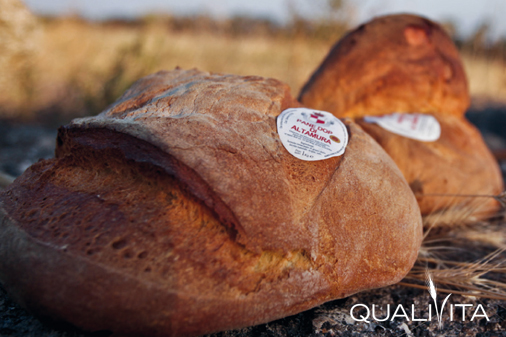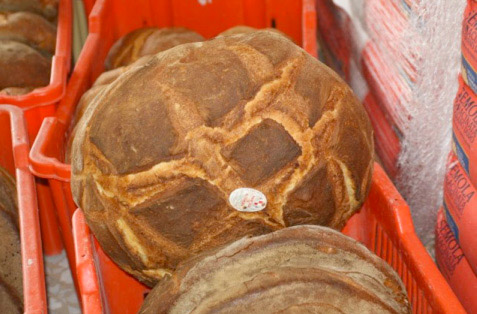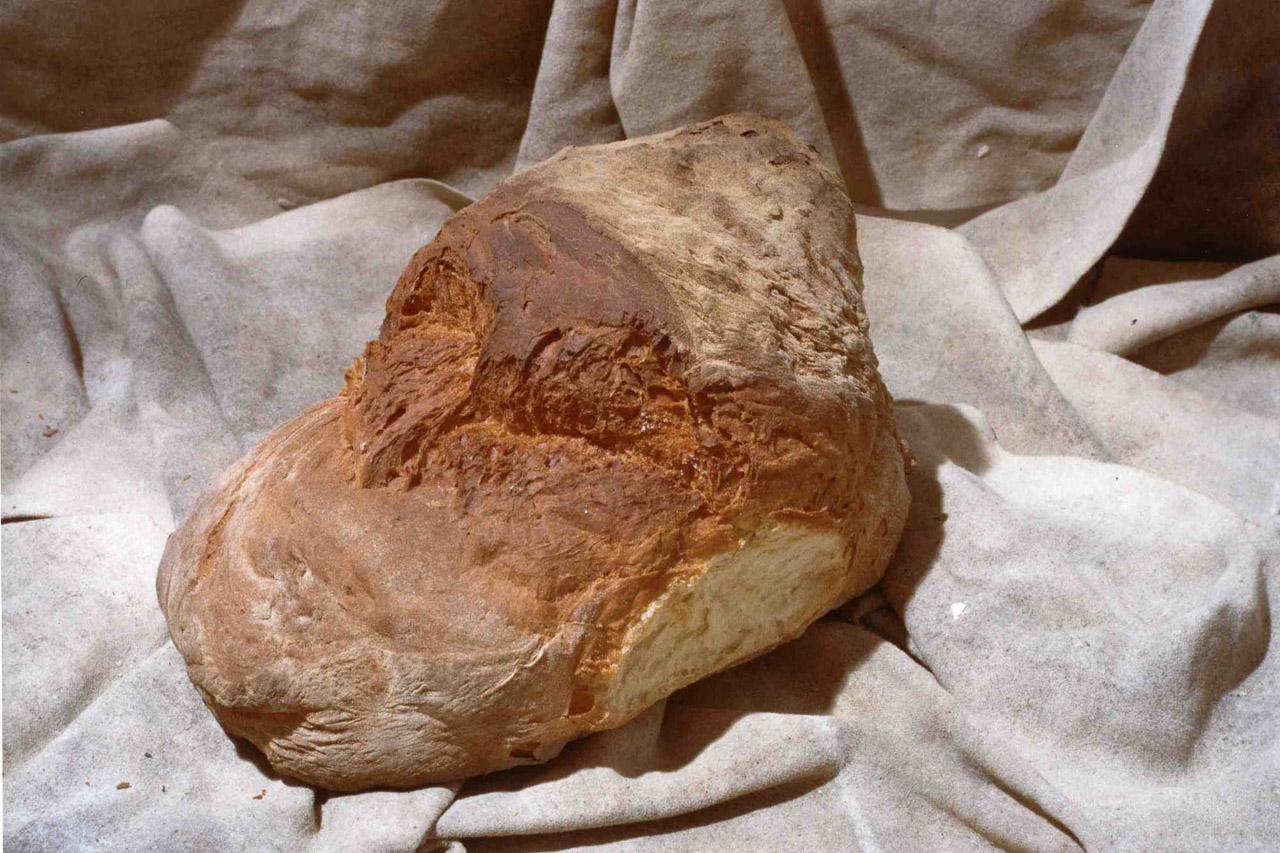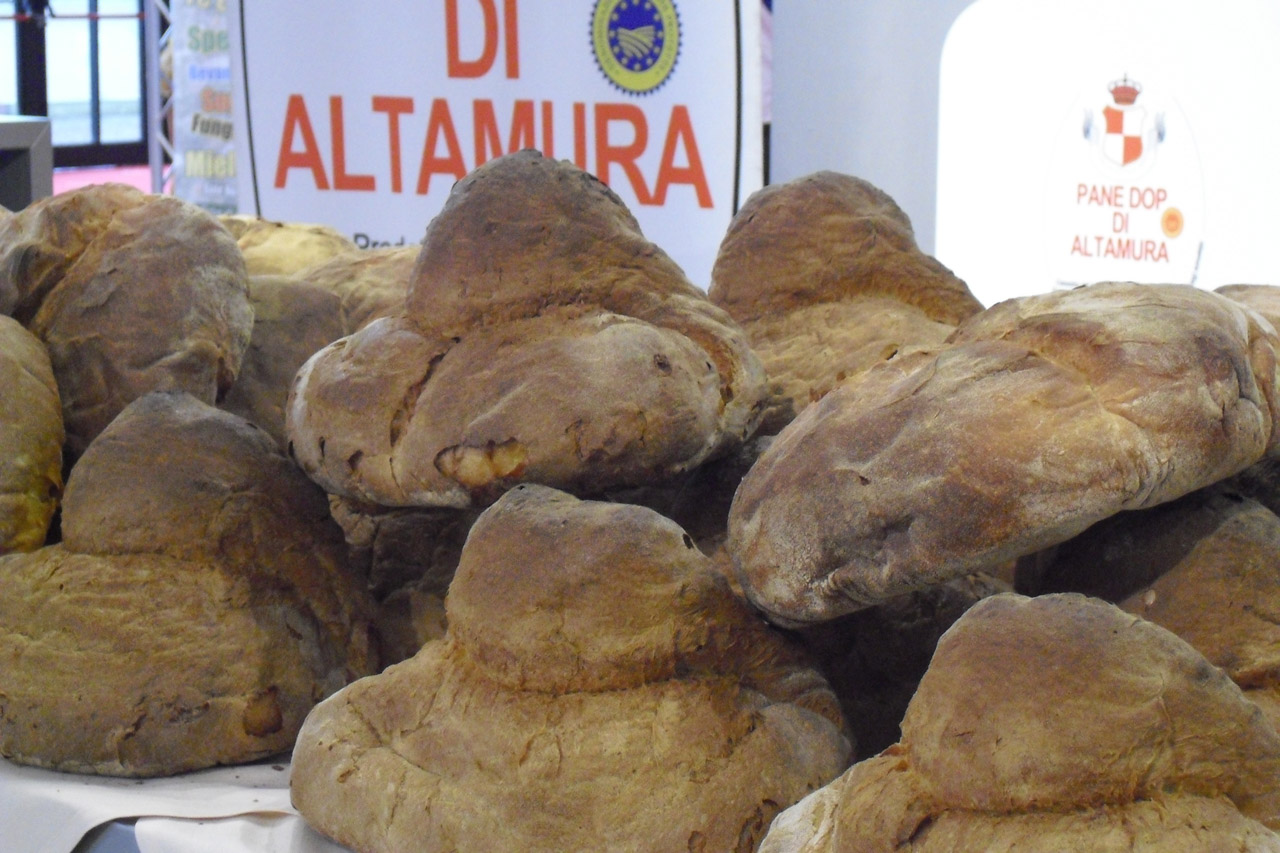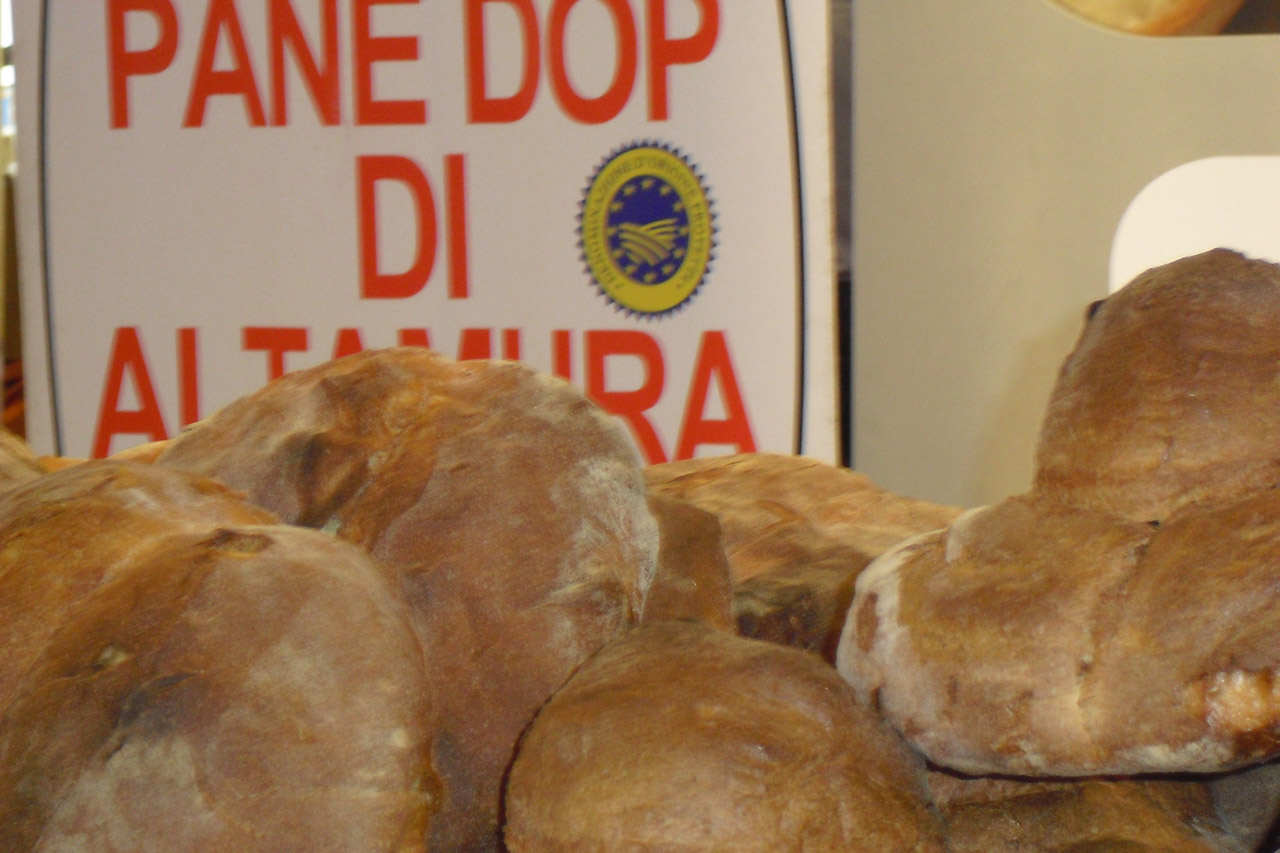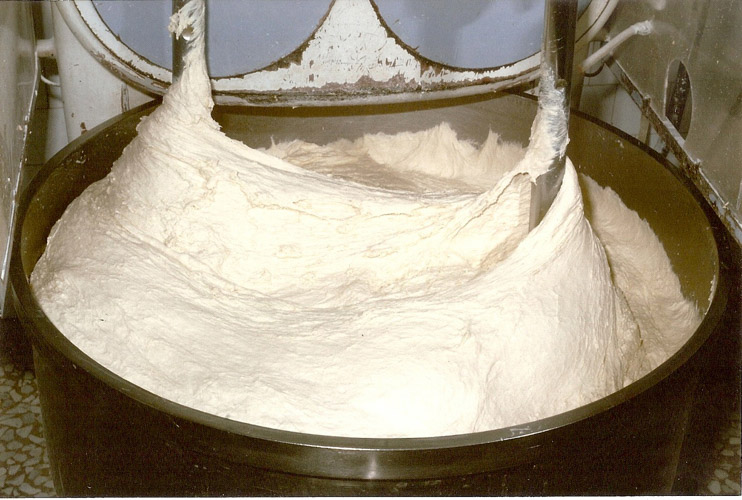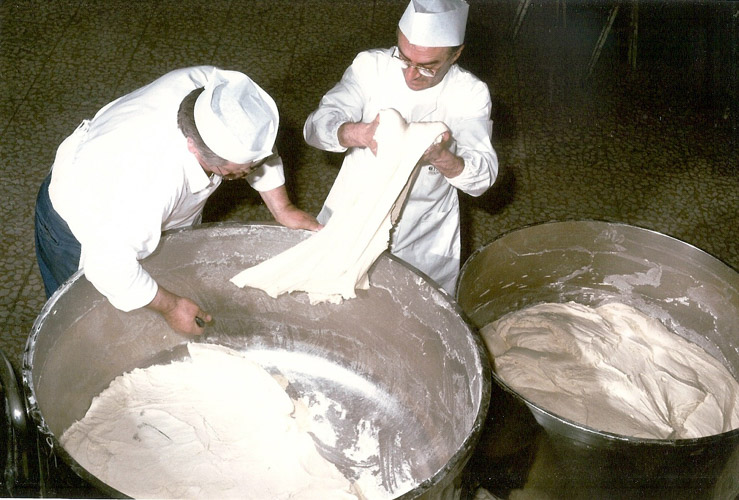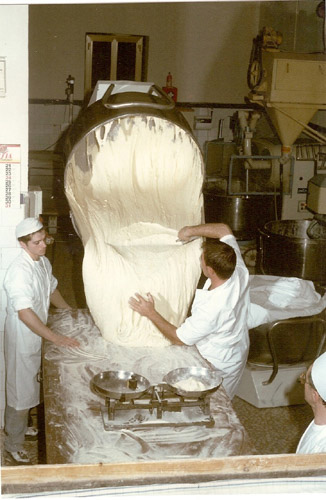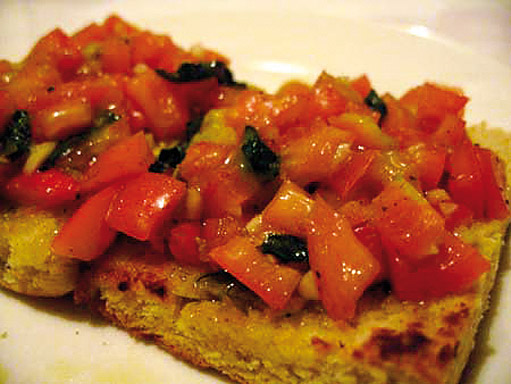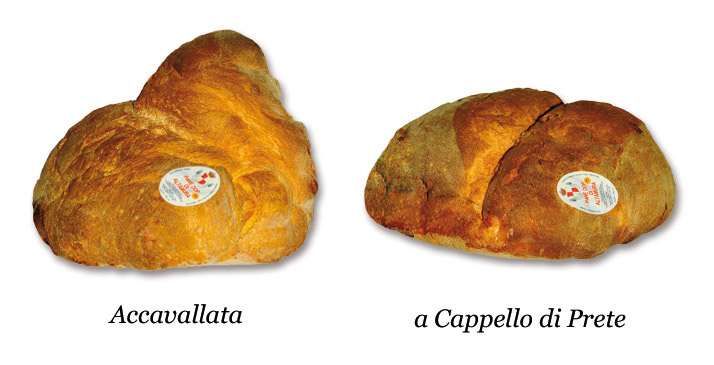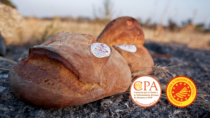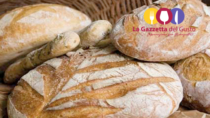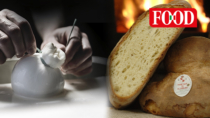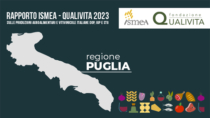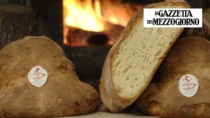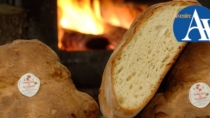Description
Pane di Altamura PDO is bread made from a dough of reground Durum wheat semolina, mother yeast or sourdough, sea salt and water.
Production Area
The production area of Pane di Altamura PDO is within the area of the Alta Murgia National Park, in the municipalities of Altamura, Gravina di Puglia, Poggiorsini, in the Province of Bari and Spinazzola and Minervino Murge, in the Province of Barletta-Andria-Trani, in the Apulia region.
Production Method
The mother yeast is renewed at least three times, with the addition of water and Durum wheat semolina, in order to increase the fermented mass. The ingredients are mixed in a mixer for 20 minutes. The dough is covered with a thick cotton cloth to ensure that it leavens at an even temperature; it is then left to rest for at least 90 minutes. The dough is weighed and then shaped by hand in two stages, alternated with two resting periods of 30 and 15 minutes. The dough loaves are then turned upside down and put into a wood or gas oven at a temperature of 250 °C. The oven door is left open for the first 15 minutes, after which it is closed and the bread is left to bake for a further 45 minutes. Once cooked, the door is opened and the bread is left for five minutes before being taken out, allowing the steam to exit and the crust to become crispy.
Appearance and Flavour
Pane di Altamura PDO comes in two shapes: the traditional Accavallata (shaped like a folded loaf, locally known as skuanete) with the edges “touching” each other, or the Cappello di Prete (shaped like a priest’s hat, locally known as a cappidd d’prevte), the edges of which don’t “touch”; the loaves weigh at least 500 g. The bread is straw-yellow, soft, and has uniform air pockets. It has a characteristic smell.
History
There are numerous written testimonies to the origins and reputation of this distinctive bread: In The Satires (c. 35 BC), for example, Horace described it as "the best bread in the world". The origins of Pane di Altamura PDO with the traditional folded loaf shape are centuries-old. The loaves were large and the dough was mostly made at home. The bread, marked with the initials of the head of the family, was then baked in public ovens. The city of Altamura referred to bread making in its Municipal Statutes of 1527, in which there are documents relative to “oven duty”. We also know that there were already 26 milling facilities in the Altamura area at the beginning of the 1600s, confirming the great diffusion of this product and how it was created in an agri-pastoral society.
Gastronomy
Pane di Altamura PDO can be kept for several days in a cool, dry place, maintaining its freshness and fragrance. It is delicious on its own or drizzled with extra virgin olive oil and salt, perhaps also with tomatoes. It can be part of a starter or served with various types of delicacies. There are many traditional recipes, like waffles with tomatoes, onions, potatoes and olives, or the Francesca slice, made with slices of stale Pane di Altamura PDO dipped in milk, topped with mortadella, cheese, mozzarella and eggs and then baked.
Marketing
The product is marketed as Pane di Altamura PDO, in the following varieties: Accavallata and Cappello di Prete. It is sold fresh year-round, in loaves weighing no less than 500 g. The final product can be packaged in perforated heat-shrink wrapping, with the distinctive and easily recognisable Pane di Altamura PDO mark on the label.
Distinctive Features
The quality of Pane di Altamura PDO is considered unique for two reasons: it derives from the Appuro, Arcangelo, Duilio and Simeto varieties of Durum wheat, which are grown in an environment with specific geographical-environmental factors, characteristic of the northwestern area of the Murge Plateau; it is obtained with the traditional method of slow natural leavening with mother yeast, using yeasts and lactic bacteria that are naturally selected and specialised in this area.



